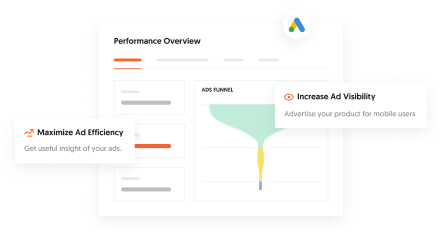Keyword rankings are a key part of knowing how well your website is performing online. They show where your site stands on search engines like Google, which impacts how many people visit your site and how interested they are in your content. However, it’s not just about ranking high; it’s about ranking for the right keywords that match your business and what your visitors need. If your keywords don’t match your business, you might get traffic, but it won’t help you reach your goals.
In this article, we’ll explain what keyword rankings mean, why they matter, how they affect your website’s traffic, and ways to check what keywords your site is ranking for.
Insight About Keyword Rankings
Understanding keyword rankings is crucial, especially for those new to SEO. This section explains what it means for a website to rank for a keyword and why it matters.
What Does It Mean for a Website to Rank for a Keyword?
When a website “ranks” for a keyword, it means its position on the search results page for that keyword. For example, if your website comes up as the second result when someone types “best home-cooked meals,” your site ranks second for that keyword.
If you run a blog about gardening and your site ranks in the top three results for “how to grow tomatoes,” people searching for that topic are likely to click your link. Ranking higher means your site is more visible and has a better chance of getting clicked.
The Significance of Ranking for Appropriate and Relevant Keywords
Ranking for relevant keywords is essential for attracting the right visitors. If you rank for unrelated keywords, you might get people visiting your site who leave quickly because your content isn’t what they were looking for. This type of traffic rarely turns into real customers or leads.
For example, a website that sells eco-friendly clothing ranking for “best smartphone reviews” would get visitors who won’t be interested in buying clothes. This leads to wasted traffic that doesn’t help the business grow. So, it’s better to rank for keywords that match your content and products, such as “sustainable fashion tips,” so you attract people who are more likely to engage and buy.
The Effect of Keyword Rankings on Website Traffic and Overall Visibility
You might think that if your website ranks high, you’ll automatically get more visitors. While a high rank can mean more visibility, getting clicks depends on a few things:
- Snippet Appeal: The title and description that show up in search results need to be interesting. If your snippet isn’t appealing, people may skip over it even if your site ranks first.
- SERP Features: Search results often include extra features like ads, featured snippets, or local business listings. These can draw attention away from regular search results, even if you rank highly.
For instance, if your website ranks second for “quick dessert recipes,” but there’s a featured snippet showing a full recipe from another site above you, many users might click on that instead of your link.
Importance of Monitoring the Keyword Rankings
Keeping an eye on your keyword rankings is like checking the health of your SEO strategy. It tells you what’s working and what needs fixing. Regularly checking your keyword positions helps you stay ahead of competitors and adapt your strategies to keep your site visible.
Understanding the Changes in Keyword Rankings
It’s normal for keyword rankings to go up and down. This happens for many reasons, such as:
- Google Algorithm Updates: Changes to how Google ranks pages can affect your position.
- Competitors’ Actions: If a competitor improves their site, your ranking could drop.
- Content Updates: If your content becomes outdated, newer content from other sites might take your spot.
These changes aren’t a reason to panic. Instead, use them to learn and improve your content and strategy.
Prioritize More Than Rankings: Drive Traffic and Increase Conversion Rate
While ranking high is important, it’s not everything. Your real goal should be to get traffic that leads to actions like sales or sign-ups. High rankings won’t help if people visit your site and don’t stay or buy anything.
Suppose, a page that ranks first for “best kitchen appliances” should have clear product information, helpful guides, and a simple buying process to turn visitors into customers.
Focus on improving the user experience, providing quality content, and optimizing calls-to-action (CTAs) to convert visitors. Remember, the ultimate success metric is the conversion rate, not just the number of visitors.
The Ways to Identify What Keywords Your Website Is Ranking for
Understanding which keywords your website ranks for can help you fine-tune your SEO strategy and attract the right visitors. Below, we’ll explore four effective methods for identifying these keywords, using both free and paid tools.
Google Search Console(GSC)
Google Search Console (GSC) is a free tool provided by Google that allows you to monitor your website’s performance on search results pages. It’s an essential tool for tracking keyword rankings, analyzing click-through rates (CTR), and optimizing your content strategy. Follow these steps to check your keyword rankings:
- Log In: Go to Google Search Console and log in with your Google account. Choose the property (website) you want to analyze.
- Navigate to Performance: Click on ‘Performance’ in the left-hand menu and then ‘Search results.’
- Switch to the Queries Tab: This tab will display a list of keywords that users have searched for when visiting your site.
- Analyze the Data: Here, you’ll see important details like total clicks, impressions, average CTR, and the average position of each keyword.
This report shows keywords your site ranks for, including clicks, impressions, average CTR, and position. GSC’s filters allow you to customize your analysis by country, device, search type, search appearance, date, and specific queries.
- Country Filter: This allows you to view keyword performance in specific countries, which is useful if you’re targeting a global audience or specific markets.
- Device Filter: Check whether your keywords are performing better on desktops, mobile devices, or tablets. This insight helps you optimize for the devices your audience uses most.
- Date Filter: Use this to compare keyword performance over time, such as tracking results month over month.
- Search Type Filter: You can filter between web searches, image searches, and video searches. This can help you understand how different types of content perform.
- Search Appearance Filter: See how often your site shows up in special search result features like rich snippets or AMP articles.
This method is perfect for those starting out or looking for cost-effective solutions. It offers a comprehensive look at how specific keywords perform in different conditions. However, GSC is great for tracking keywords already bringing traffic, it won’t show potential keywords or comprehensive competitive analysis.
Manually Search on Google
Doing a manual check can give you a real-world view of your website’s ranking. While it’s a more hands-on approach, it helps you understand how your content appears to users.
Steps for Manual Checking:
- Open an Incognito Window: Use Incognito Mode to ensure your search history and personalization don’t affect the results.
- Type Your Keyword: Enter the keyword you want to check into the search bar and hit enter.
- Scroll Through Results: Browse through the SERPs to find your website’s position.
- Repeat for Other Keywords: Do this for other relevant keywords you wish to track.
Tips for More Accurate Results:
- Use a VPN: Search results can vary by location, so using a VPN can mimic searches from different regions to see how your site ranks elsewhere.
- Adjust Your Search Settings: Modify Google’s settings to show more results per page if you’re checking a large number of keywords.
This process offers a simple way to get a feel for your keyword rankings and shows how your website actually appears in search results. But checking multiple keywords manually can take a long time and factors like your IP address can still influence results, even in Incognito Mode.
Use of Ahrefs
Ahrefs is a popular paid SEO tool known for its powerful backlink analysis, but it also excels at showing keyword rankings and related insights. Ahrefs helps to prioritize which keywords to focus on. Also, you can check how your rankings for specific keywords have changed over time.
Steps to Use Ahrefs:
- Log In: Access your Ahrefs account.
- Navigate to Site Explorer: Enter your website URL in the search bar and click ‘Explore.’
- View Organic Keywords: In the Site Explorer dashboard, find the ‘Organic Keywords’ section. This displays all the keywords your site ranks for, including their positions, search volume, and the page ranking for each keyword.
- Filter for Specific Insights: Use filters to see keywords by position (e.g., keywords ranked 1-10), volume, or other criteria.
While it offers great insights, it comes at a cost that might not be feasible for smaller businesses.
Use of Semrush
Semrush is another paid tool that provides detailed data about your keyword rankings, competitor performance, and overall SEO health. It has some incredible features like,
- You can track specific keywords over time to see if your SEO strategies are effective.
- You can analyze competitors’ keywords to identify content gaps or opportunities for your site.
- You can see if your keywords are appearing in any special SERP elements like featured snippets or local packs.
Steps to Use Semrush:
- Log In to Your Account: If you don’t have an account, you can start with a free trial.
- Navigate to Organic Research: Enter your website URL in the ‘Organic Research’ tool, located under the SEO section.
- Review the Data: The report shows keywords your site ranks for, including their positions, search volume, and the URLs of the pages ranking for each keyword.
- Apply Filters: Use filters to focus on specific keywords, such as those in the top 10 or those with a high search volume.
Semrush provides insights not just on keyword rankings but also on content ideas, backlink audits, and more. But remember, like Ahrefs, Semrush is a paid tool that might be expensive for smaller websites or individual users.
Conclusion
Finding out which keywords your website ranks for is vital to understanding your SEO progress and shaping your strategy. Google Search Console is an excellent, cost-free way to start, while manual checks can offer a quick, personal view of your results. If you need more detailed data and competitor analysis, tools like Ahrefs and Semrush provide comprehensive insights. By regularly checking your keyword rankings, you can keep improving your site’s visibility and ensure you’re attracting the right audience that is more likely to engage and convert.




